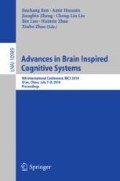Abstract
The application of intelligent question answering system in college assistant teaching is an effective way to reduce the workload of university teachers and improve students’ learning efficiency. With the rapid development of related technologies, the intelligent question answering system has made great progress, but there is little related work in answering students’ university course questions, and there are some problems such as poor accuracy and non universality. Because of this reason, it cannot fully meet the demands of universities. Therefore, this paper proposes an intelligent question answering system for professional questions. First, we select candidate question-and-answer pairs in the knowledge base through professional word matching, and then use the attention mechanism proposed in this paper and bi-directional long short term memory network (BiLSTM) to calculate the semantic similarity between query questions and candidate questions. Multiplying the semantic similarity by the keywords similarity of the two questions as the final similarity. Finally, we push the three most similar candidate questions and the corresponding answers to students. The experimental results show that the system improves the accuracy of answering students’ university course questions, and is applicable to any university course.
Access this chapter
Tax calculation will be finalised at checkout
Purchases are for personal use only
References
Zhang, J., Ma, Y., et al.: A research on student model based on intelligent computer assisted instruction. In: International Conference on IC4E 2010, pp. 308–310. IEEE (2010)
Hao, Y., Zhang, Y., et al.: An end-to-end model for question answering over knowledge base with cross-attention combining global knowledge. In: Proceedings of the 55th Annual Meeting of the Association for Computational Linguistics, Long Papers, vol. 1, pp. 221–231 (2017)
Devi, M., Dua, M., et al.: An agriculture domain question answering system using ontologies. In: International Conference on Computing, Communication and Automation, pp. 122–127 (2017)
Kahaduwa, H., Pathirana, D., et al.: Question answering system for the travel domain. In: Engineering Research Conference, pp. 449–454. IEEE (2017)
Yih, S.W., Chang, M.W., et al.: Semantic parsing via staged query graph generation: question answering with knowledge base (2015)
Xu, K., Reddy, S., et al.: Question answering on freebase via relation extraction and textual evidence. arXiv preprint arXiv:1603.00957 (2016)
Berant, J., Chou, A., et al.: Semantic parsing on freebase from question–answer pairs. In: Proceedings of the 2013 Conference on Empirical Methods in Natural Language Processing, pp. 1533–1544 (2013)
Rajpurkar, P., Zhang, J., et al.: Squad: 100,000+ questions for machine comprehension of text. arXiv preprint arXiv:1606.05250 (2016)
Minaee, S., Liu, Z.: Automatic question–answering using a deep similarity neural network. arXiv preprint arXiv:1708.01713 (2017)
Lei, K., Deng, Y., et al.: Open domain question answering with character-level deep learning models. In: 10th International Symposium on, vol. 2, pp. 30–33. IEEE (2017)
Zhou, Y.: An Automatic Question Answering System Based on Ontology. Jiangsu University of Science and Technology, Zhenjiang (2011)
Chen, X.: Research and implementation of curriculum knowledge quiz system based on community Q & a technology (2017)
Wang, X.: Research on Intelligent Question Answering System Based on Chinese Word Segmentation and Knowledge Ontology Technology. Hunan University, Changsha (2015)
Chen, D., Fisch, A., et al.: Reading Wikipedia to answer open-domain questions. arXiv preprint arXiv:1704.00051 (2017)
Larson, R.R., et al.: Introduction to information retrieval. J. Am. Soc. Inf. Sci. Technol. 61(4), 852–853 (2010)
Mnih, V., Heess, N., Graves, A.: Recurrent models of visual attention. In: Advances in Neural Information Processing Systems, pp. 2204–2212 (2014)
Wang, W., Yang, N., et al.: Gated self-matching networks for reading comprehension and question answering. In: Proceedings of the 55th Annual Meeting of the Association for Computational Linguistics, Long Papers, vol. 1, pp. 189–198 (2017)
Wang, Z., Hamza, W., et al.: Bilateral multi-perspective matching for natural language sentences (2017)
Bahdanau, D., Cho, K., et al.: Neural machine translation by jointly learning to align and translate. arXiv preprint arXiv:1409.0473 (2014)
Mueller, J., Thyagarajan, A.: Siamese recurrent architectures for learning sentence similarity. In: Thirtieth AAAI Conference on Artificial Intelligence, pp. 2786–2792. AAAI Press (2016)
Xiao, H., Meng, L.: Hungarian layer: logics empowered neural architecture (2017)
Wang, Z., Ren, J., et al.: A deep-learning based feature hybrid framework for spatiotemporal saliency detection inside videos. Neurocomputing 287, 68–83 (2018)
Ren, J., Jiang, J.: Hierarchical modeling and adaptive clustering for real-time summarization of rush videos. IEEE Trans. Multimed. 11(5), 906–917 (2009)
Han, J., et al.: Object detection in optical remote sensing images based on weakly supervised learning and high-level feature learning. IEEE Trans. Geosci. Remote Sens. 53(6), 3325–3337 (2015)
Chen, J.: Modelling of content-aware indicators for effective determination of shot boundaries in compressed MPEG videos. Multimed. Tools Appl. 54(2), 219–239 (2011)
Zaihidee, E.M.: A hybrid thermal-visible fusion for outdoor human detection. J. Telecommun. Electron. Comput. Eng. (JTEC) 10, 79–83 (2018)
Acknowledgements
The project is supported by HJSW and Research & Development plan of Shaanxi Province (Program No. 2017ZDXM-GY-094, 2015KTZDGY04-01).
Author information
Authors and Affiliations
Corresponding author
Editor information
Editors and Affiliations
Rights and permissions
Copyright information
© 2018 Springer Nature Switzerland AG
About this paper
Cite this paper
Ma, C., Li, B., Zhao, T., Wei, W. (2018). An Intelligent Question Answering System for University Courses Based on BiLSTM and Keywords Similarity. In: Ren, J., et al. Advances in Brain Inspired Cognitive Systems. BICS 2018. Lecture Notes in Computer Science(), vol 10989. Springer, Cham. https://doi.org/10.1007/978-3-030-00563-4_61
Download citation
DOI: https://doi.org/10.1007/978-3-030-00563-4_61
Published:
Publisher Name: Springer, Cham
Print ISBN: 978-3-030-00562-7
Online ISBN: 978-3-030-00563-4
eBook Packages: Computer ScienceComputer Science (R0)

